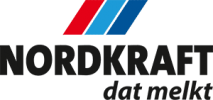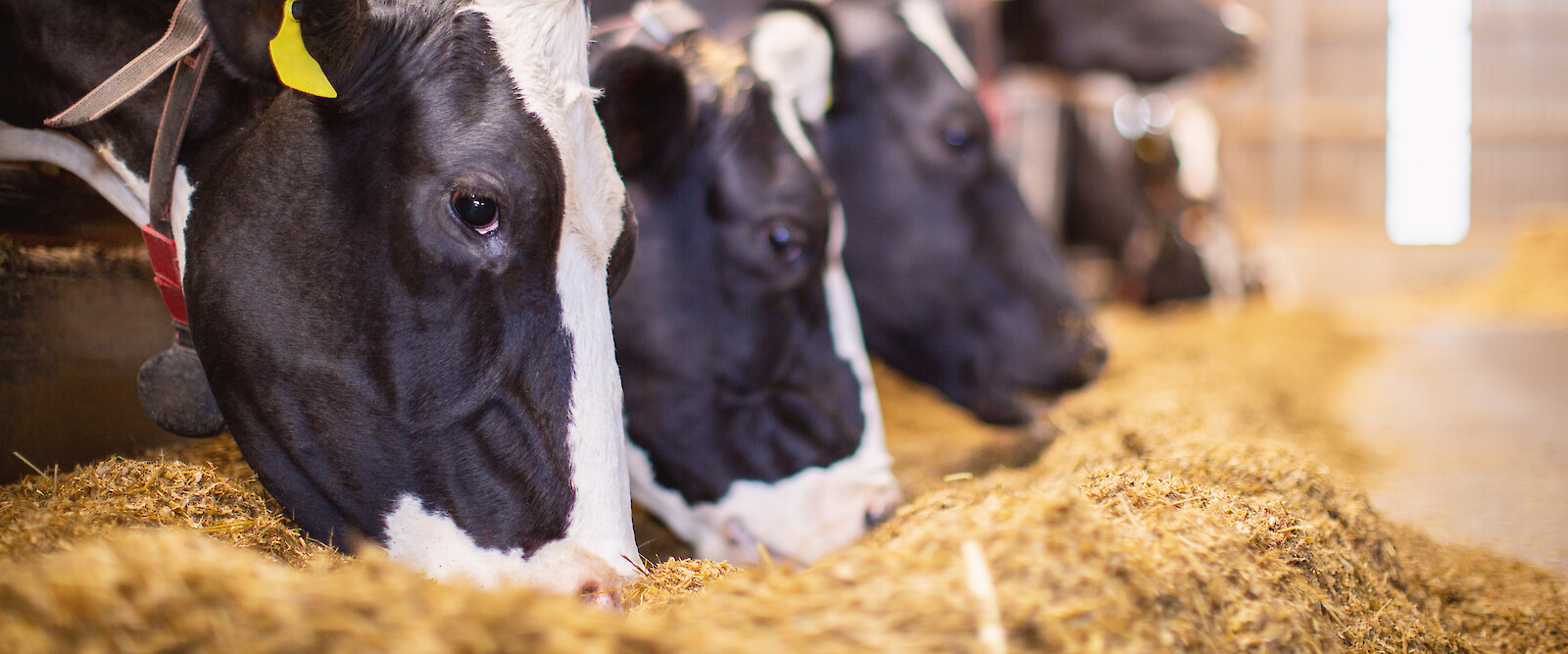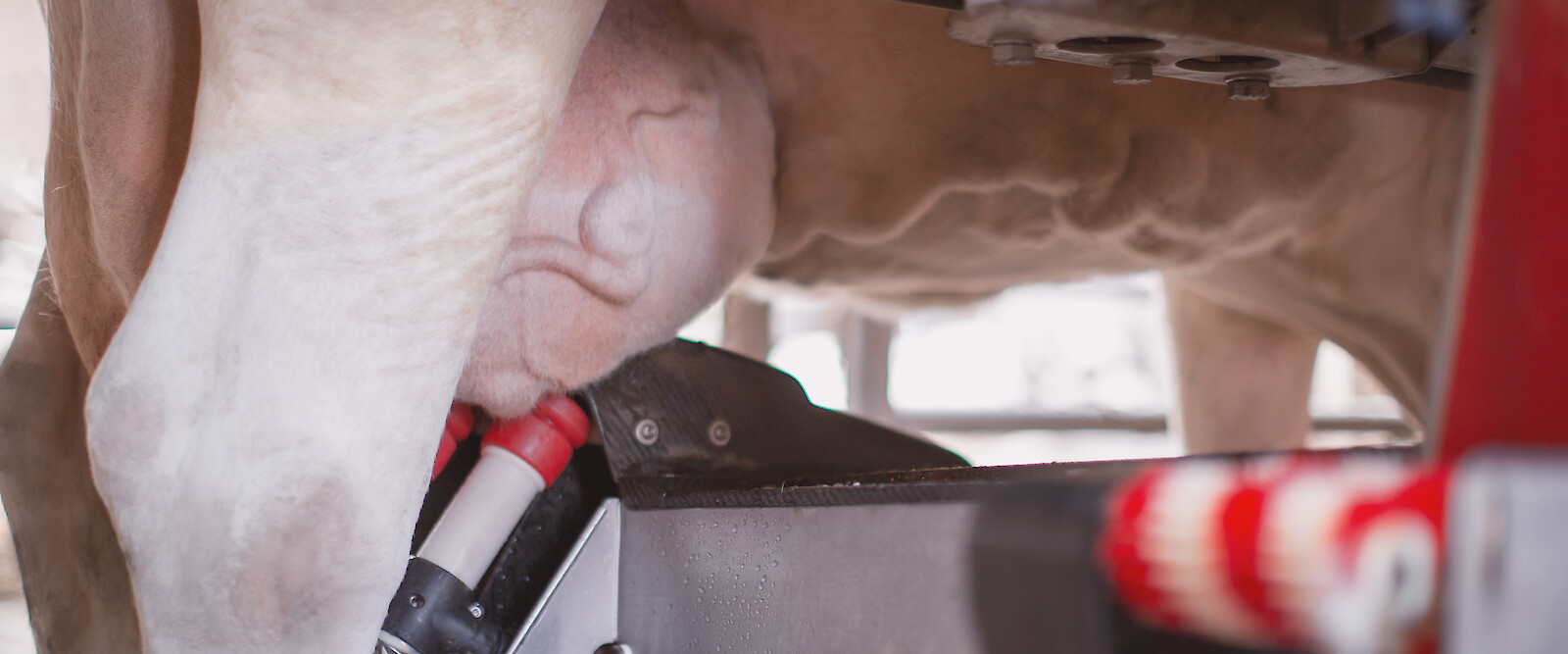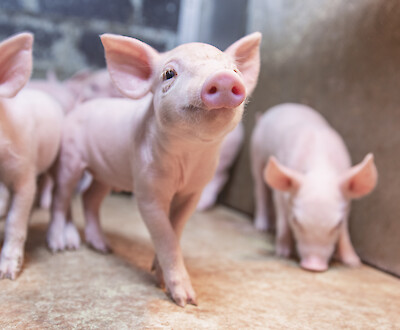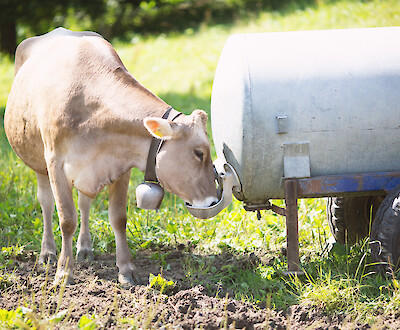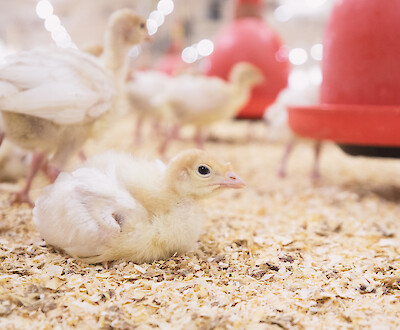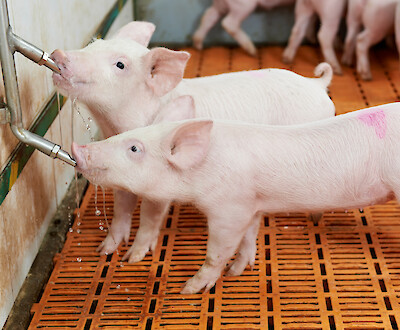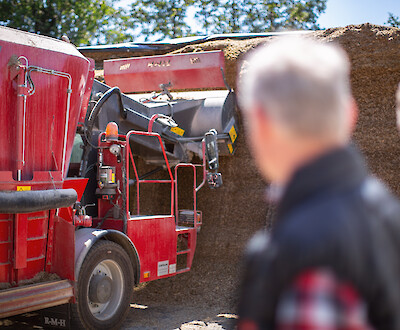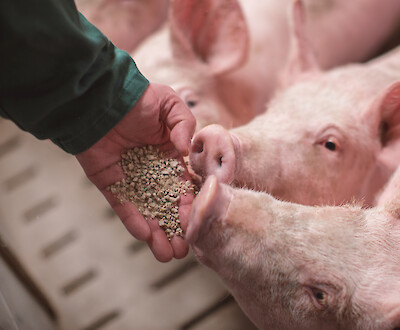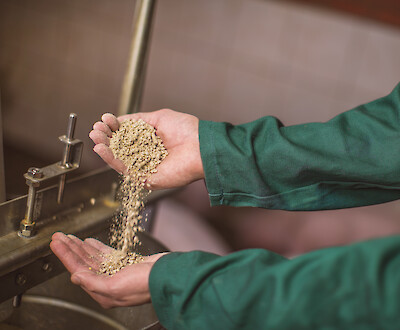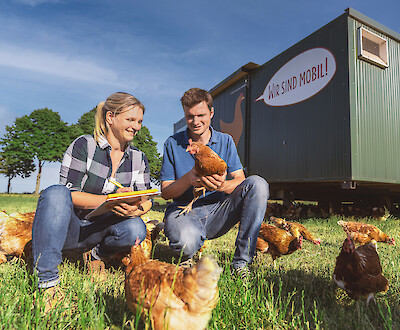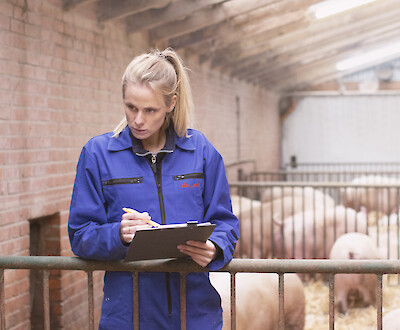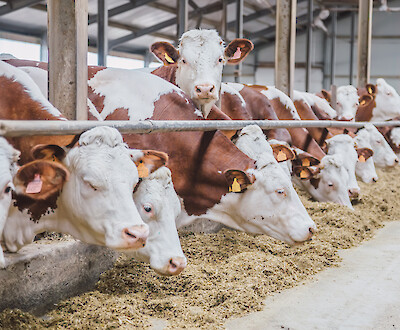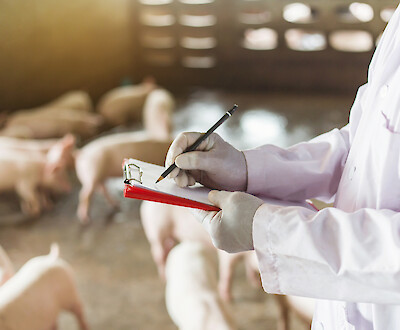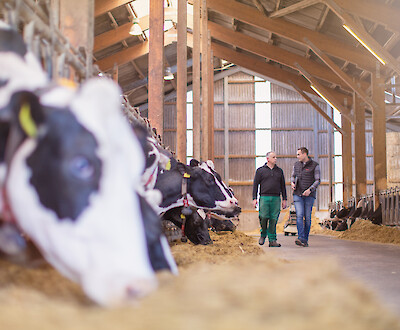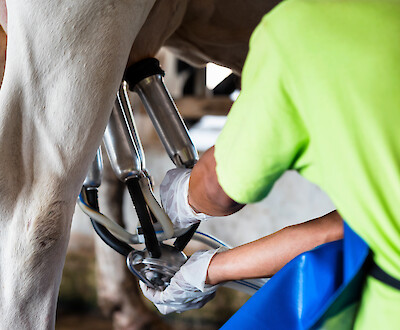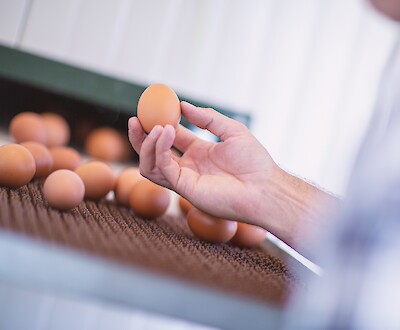Ration design and feed selection for good running behavior, rumen health and high performance
Optimal feeding for farms with automatic milking system (AMS)
More and more farmers are investing in an automatic milking system (AMS) as part of the modernization of milking technology. The systems offer more flexibility in carrying out daily work and a significant reduction in the workload during peak periods. In addition, automation offers the possibility of reducing working time compared to conventional milking. The walking behavior of the cows to the milking robot plays a central role here. The following article explains how it is influenced by the choice of the right concentrate concept and the setting of the trogration.
Better walking performance and more milk: goals on farms with automatic milking systems (AMS)
Working time is a scarce commodity for many farmers. Reducing it with the help of an automatic milking system (AMS) is a worthwhile goal. However, time savings can only be achieved if the herd has optimal walking behavior and a large proportion of the animals visit the AMS independently. The fewer cows that need to be moved, the greater the time savings. On optimally managed AMS farms, only 1/3 of the average man-hours are required compared to farms that are not optimally managed. Thus, compared to farms with conventional milking technology, up to ten hours of work per cow and year can be saved. At the same time, the share of physically heavy work decreases and is replaced by control work.
Factors influencing the walking behavior of cows on AMS farms
- Utilization of the automatic milking system (AMS)
- Farm specific management
- Lactation stage and performance of cows
- Adjustment of feed ration in combination with the choice of the right concentrate concept
- Health status of the cows (especially hoof health)
- Structural conditions
- Housing density in the barn
At the same time, there is the potential for an increase in herd performance due to more frequent milking. Especially in the first half of lactation, farms can increase milk yield by up to 15 percent by milking 3 times a day, which corresponds to a performance increase for the entire lactation of up to seven percent.
Targets on AMS farms require adaptation of feeding
For the introduction of an automatic milking system (AMS) to be a success, farm managers must get used to new procedures and question existing processes. An important condition for this is the adaptation of feeding to the new milking technology. A good running behavior to the AMS is directly related to the choice of the right concentrate and the adjustment of the trogration. Thus, in addition to providing nutrients, the concentrate at the AMS primarily serves as an attractant so that the cows independently seek out the AMS.
Effect of the concentrate concept on rumen health and digestion of the cows
The special requirements of AMS feeding become clear when looking at the differences to other common feeding systems. Compared to total mixed ration (TMR), part of the concentrate is fed separately to the basic ration and is therefore not linked to the intake of the structure-providing basic feeds. In addition, the concentrate is fed during the milking period - i.e. at two to four intervals per day. This results in a larger amount of concentrate per interval than with transponder feeding, where smaller portions are distributed over many intervals per day. The peculiarities of this feeding system become clear when looking at the carbohydrate digestion of the ruminant.
Concentrate feeds are characterized by a high digestibility and density of energy. Carbohydrates are the main energy suppliers. Most of these are already broken down in the rumen to short-chain fatty acids, which in turn are absorbed via the rumen villi. However, depending on whether the carbohydrates are present as rumen-degradable starch, sugar or as fibrous carbohydrates, there are differences in the rate of degradation:
-
Rumen degradable starch is rapidly degraded to propionic acid by the rumen microbes. However, more propionic acid is formed than can be absorbed via the rumen villi in the same time. As a result, the pH in the rumen drops. Subacute or acute rumen acidosis is the possible consequence (see infobox below).
-
The degradation process of fibrous carbohydrates from celluloses, hemicelluloses and pectins is much slower. This process mainly produces acetic acid, which is promptly transported away via the rumen villi, thus keeping the pH value in the rumen stable.
-
Rumen-stable starch passes through the rumen and is only digested and absorbed by the cow in the small intestine. The rumen pH is not affected by this.
The frequency and quantity of concentrate feeding also have an effect on the pH value in the rumen. Thus, high concentrates distributed over a few intervals - as is the case on AMS farms - lead to greater reductions in pH than many small concentrates portions, as is the case with transponder feeding.
Also, a high proportion of rapidly fermentable starch and rapidly fermentable sugar in the concentrate leads to a significantly higher lowering of pH than a high proportion of digestible crude fiber and rumen-stable starch. The same is true for portion sizes: Large amounts of rapidly fermentable concentrate lower pH significantly faster and further than smaller feed portions. For this reason, the importance of the composition of the concentrate is particularly evident for feeding at the AMS. Acidosis prophylaxis is the top priority to achieve maximum feed intake, performance and animal health.
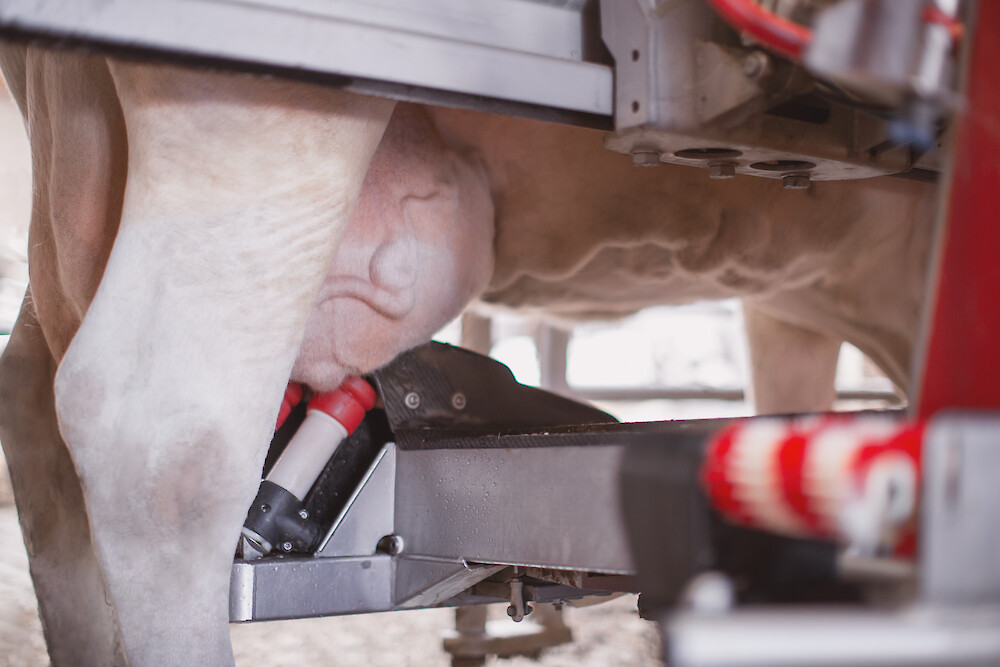
Special feature of AMS feeding: Relationship between milking time and amount of concentrate
In AMS feeding, concentrate feeding is linked to milking time. The minimum amount of concentrate fed per visit should be one kilogram for late-lactating cows to ensure adequate running ability. For cows in peak lactation, the maximum amount of rumen-protecting concentrate is 2.5 kilograms per visit. However, no more than a total of six kilograms per day should be fed on AMS. For concentrates with a higher proportion of rapidly fermentable carbohydrates, both the maximum amount per visit and the maximum amount per day should be lower and calculated on a farm-by-farm basis.
If the amount of concentrate used separately from the basic ration is more than six kilograms per animal per day, the use of an additional concentrate station is recommended. Communication between the AMS and the concentrate station is an absolute must. Finally, walking to the AMS is a top priority. Cows that have a milking right must not have a feed right at the concentrate station at the same time. In addition, cows should not have a concentrate right at the concentrate station immediately after the milking visit at the AMS to avoid ingesting excessive amounts of concentrate in a short period of time.
The time per milking at the AMS averages about six and a half minutes. In this time, the cows should be able to eat the amount of feed provided for milking. This clearly shows that the feeding time at the AMS is a limiting factor for feed intake and, with it, for the structure of the feed.
Requirements for feed structure on farms with automatic milking system (AMS)
The speed of feed intake is not the same for all feeds and is essentially dependent on the structure of the feed. The finer the structure, the more saliva must be produced by the animal to swallow the feed well. This takes time and affects the speed of feed intake. Cows can ingest about 200 grams per minute of meal-like feed, about 280 grams per minute of coarsely ground feed, and about 400 grams per minute of pelleted feed.
This results in a considerable difference in terms of the feeding time required to completely eat the amount of concentrate: the feeding time for 2.5 kilograms of meal-based feed is around twelve and a half minutes, for a coarsely ground feed around nine minutes and just under six minutes for a pelletized feed. In order to milk as much milk as possible with the AMS, the use of a pelleted feed is therefore recommended. Here, no feeding time is required beyond the milking time and no feed residues from freshly milked cows remain in the trough to be eaten by other cows.
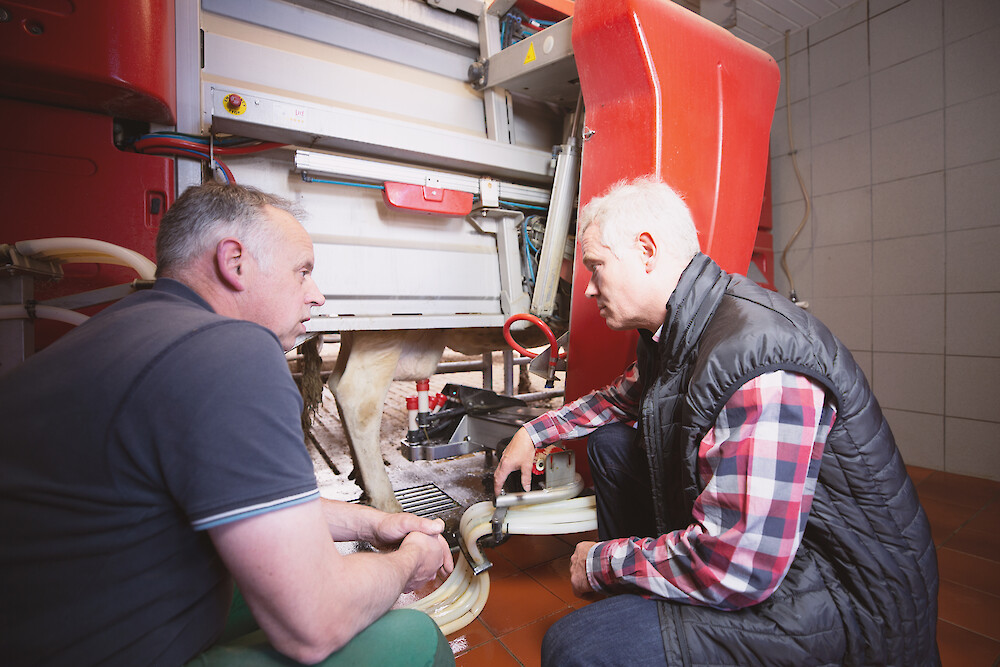
Optimal concentrate selection at the AMS: You should pay attention to this
In order to exert an ideal luring effect on the cows, both the pellet structure and the palatability of the concentrate are crucial. In addition to the very palatable and yet rumen-friendly combination of rumen-stable starch (e.g. from maize and maize by-products) and digestible crude fiber (e.g. sugar beet pulp and cereal by-products), the use of pressure hydrothermally treated components such as deukalac NG UDP 33 (rumen-protected rapeseed meal) is recommended.
Corresponding refinement is achieved with the aid of the patented opticon® process. In addition to improved amino acid availability at the small intestine, the roasted aromas produced in the refining process ensure that the attractiveness of the feed increases. Finally, the consistency of the formulation ensures that the attractiveness remains constant from delivery to delivery. The open declaration of our special and lac feeds confirms our high quality standards.
Precise supply of the herd at the AMS through the use of different concentrates
Cows in peak lactation have different feeding requirements than cows in late lactation. To accommodate the different nutritional needs of the animals, consider installing multiple concentrate feeders when planning an AMS. This allows the different needs of each cow to be met through feed without increasing feed costs per animal per day.
It also makes it easier to implement nitrogen (N)- and phosphate (P)-reduced feeding. By providing suitable and precisely matched feeds for each cow, luxury consumption in late lactation can be more easily avoided. With the RumiTop® N+P Efficiency Calculator you can determine the extent to which you can save operating costs by switching to N+P-reduced feeding.
Ration design on farms with Automatic Milking System (AMS)
High basic feed intakes are a prerequisite for high performance while maintaining good rumen health. In addition to energy density, the proportion of concentrate feed in the trogration also has an influence on the intake of basic feed. Generally, with a higher energy concentration, the feed intake of the cows also increases. At the same time, however, the concentration of rumen-degradable starch and sugar increases as a result of the concentrate content. As a result, cows that are in late lactation and give off less energy through milk than they take in through trogration are already sufficiently saturated by the trogration. These animals show a lower willingness to run than high-lactation cows. In addition, these cows increase feed costs per liter of milk and profitability decreases. In addition, late-lactating cows, which become fatty due to the excessive energy supply, have a significantly higher risk of secondary diseases (e.g. ketoses at the beginning of the next lactation). With regard to feeding at the AMS, it is therefore necessary to achieve a balancing act between good basic feed intake and simultaneous maintenance of readiness to run.
The quality of the coarse feed (especially the fermentation quality) is of particular importance. Silages used should be of "very good" quality according to the DLG fermentation feed key (> 90 points), free of butyric acid and contain less than three percent acetic acid. In addition, a dry matter content that is not too high (< 45 percent) is advantageous for high feed intake.
As long as starch and sugar concentrations allow, on-farm grains or corn-cob mix (CCM) can also be used in the ration without compromising the animals' willingness to run too much. These feeds are ideal for use in trogration if they are finely ground and the dry matter content of the ration is not too high (below 38 percent dry matter) to avoid selective eating. In this way, the rapidly fermentable starch is always bound to the raw fiber-providing staple feeds, which means they are always ingested in combination. This significantly reduces the risk of acidosis (see info box) associated with these feeds. Finally, the basic ration must also be balanced with regard to the requirement of usable crude protein (nXP) up to the usable amino acids, minerals, vitamins and trace elements.
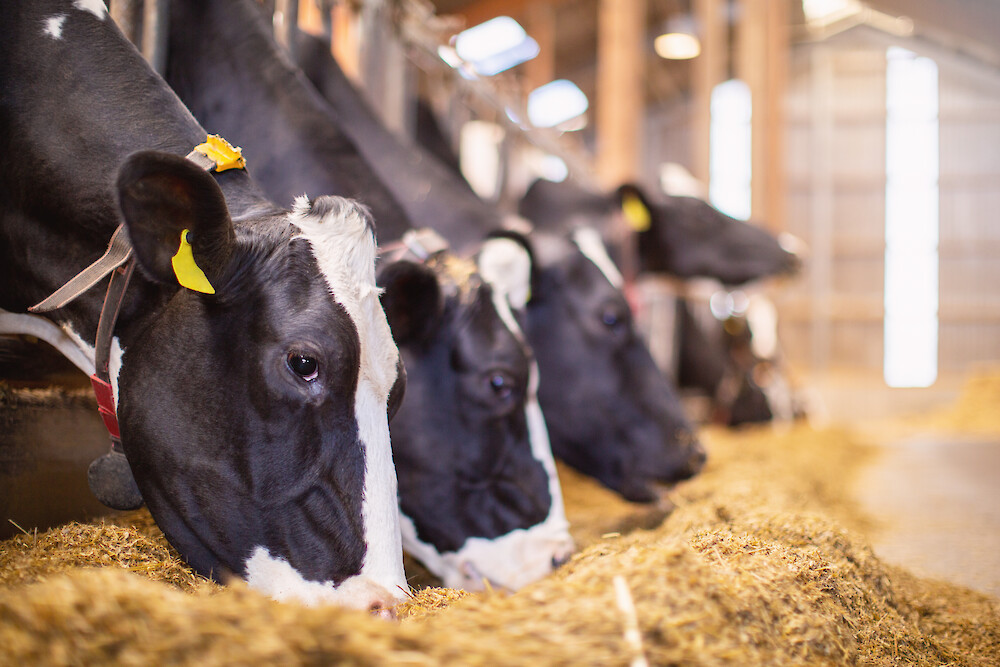
Risks of acidosis for cow animal health
Acidoses thus pose a major risk to the AMS operation, as cows become sluggish and show less willingness to run to the AMS. If rumen acidosis occurs due to improper feeding, the feed intake of the affected cow is reduced. If concentrate intake initially remains stable with reduced basal feed intake, this may result in the animal consuming even less crude fiber. This exacerbates an existing acidosis and, in the worst case, can lead to death of the cow.
But subacute acidosis also carries risks: Acidoses are always accompanied by toxin formation. These can cause lasting damage to the dermis of the hooves. As a result, the hoof horn is less hard and stable, which can lead to sole ulcers or white line defects. If an acidosis-related hoof disease is added to this, the animals no longer walk to the AMS on their own. In addition to the financial damage caused by direct loss of performance, this results in additional labor costs due to a higher post-rubbing effort.
Conclusion: Optimal feeding for farms with automatic milking system (AMS)
- An Automatic Milking System (AMS) can help increase milk yield on farms and save labor time. In order to achieve both goals, farm managers need to optimize the herd's walking behavior to the AMS.
- Proper feeding plays a key role in this. Concentrate feed at the AMS serves as an attractant to lead the herd to the AMS on its own.
- Forages optimally suited for AMS feeding thus contain a combination of palatable and at the same time rumen-protecting components (rumen-stable starch, digestible crude fiber and pressure-hydrothermally treated components (e.g. deukalac NG UDP 33).
- Parallel to this, the trogration must ensure good basic feed intake while maintaining readiness to run.
Contact person

Susanne Schneider
Contact person



